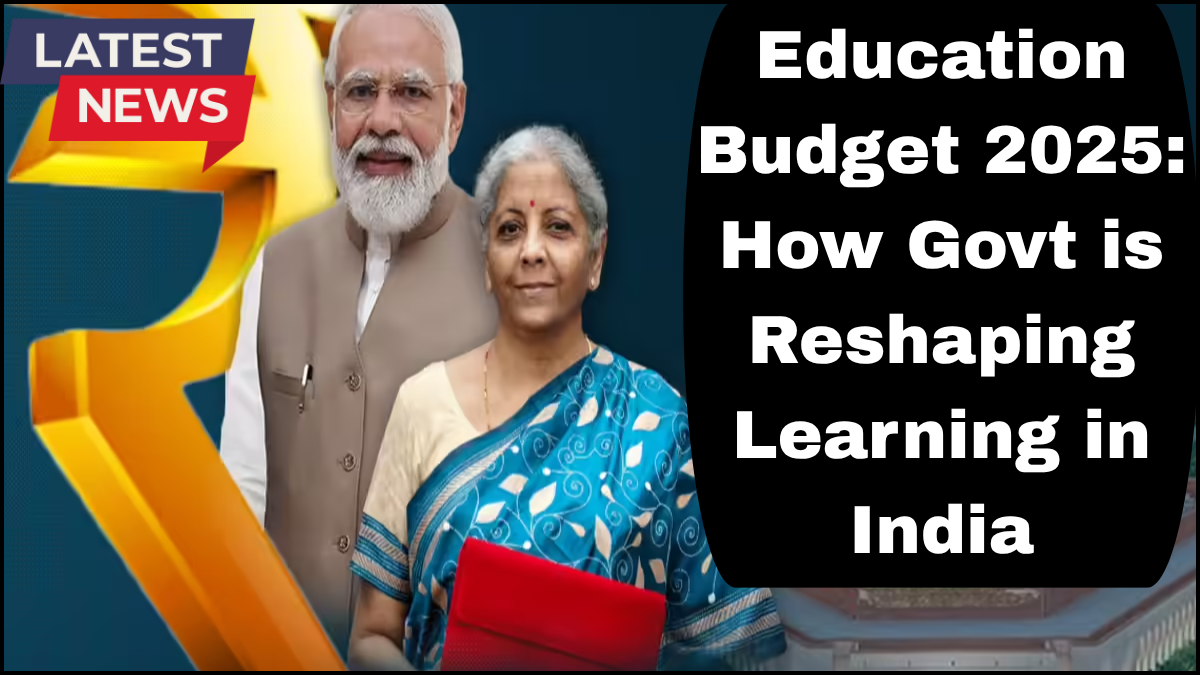India’s Education Budget 2025 signals a pivotal shift in the nation’s approach to education. With an eye on inclusivity, technology, and foundational learning, the government is pushing reforms that aim to make the education system more future-ready. The focus is not just on increasing allocations but also on restructuring how funds are utilized to drive meaningful change.

Here’s a deep dive into the highlights, priorities, and potential impact of the 2025 education budget.
Major Funding Boost in Education Budget 2025
This year’s budget has seen a significant increase in allocation, touching ₹1.26 lakh crore—a 14% jump from the previous year. The central government’s intention is clear: invest in the building blocks of education to equip young Indians with skills and knowledge for the 21st century.
Key focus areas include:
-
Foundational literacy and numeracy
-
Digital infrastructure in schools and colleges
-
Capacity building for teachers
-
Expansion of vocational and skill-based education
These areas align with the goals laid out in the National Education Policy (NEP) 2020, providing momentum to reforms that have long been overdue.
Strengthening School Education Through Govt Grants
A considerable portion of the Education Budget 2025 is earmarked for Govt Grants to public schools, especially in rural and underserved areas. The Samagra Shiksha Abhiyan has been bolstered with a ₹6,000 crore increase, ensuring better access to learning materials, trained educators, and infrastructure.
Under this initiative:
-
Government schools will receive smart classrooms and e-content.
-
Residential schools for tribal and marginalized students are being expanded.
-
Special grants will support girl-child education through scholarships and retention programs.
This approach attempts to bridge the urban-rural divide and make education accessible and equitable.
Push for Digital and Skill-Based Education
With India’s youth population increasingly leaning towards tech-driven careers, the Education Budget 2025 is geared toward embedding digital learning and skill training in the curriculum.
Digital Learning Initiatives Include:
-
Expansion of PM eVIDYA to all states, with digital courses in multiple Indian languages.
-
Allocation of ₹3,200 crore for the development of educational content via AI and immersive tech like AR/VR.
-
Creation of Digital University Hubs to support hybrid learning models.
On the vocational side, the Skill India Mission has received a fresh infusion of ₹5,800 crore, focusing on:
-
Hands-on training in emerging sectors like AI, robotics, clean energy, and semiconductors.
-
Industry partnerships to make training more market-relevant.
-
Apprenticeship programs integrated with school and college curricula.
Higher Education: Funding Autonomy and Research Incentives
The government is also reimagining higher education with a combination of autonomy and innovation. The Higher Education Financing Agency (HEFA) is being expanded to provide low-interest loans and grants for universities to upgrade labs, libraries, and research facilities.
Highlights include:
-
₹9,500 crore allocated for central universities.
-
Research grants to promote interdisciplinary innovation.
-
Incentives for collaboration between academia and industry.
This also includes a renewed push to internationalize Indian higher education, encouraging collaboration with global universities and joint degrees under the Study in India program.
Teacher Training and Recruitment Reform
An often-overlooked component of educational reform—teacher quality—gets serious attention in this year’s budget. A ₹2,000 crore package has been announced for teacher training, performance evaluation, and recruitment reform.
Changes will include:
-
Certification programs via digital platforms for in-service teachers.
-
Regular skill audits and performance-linked incentives.
-
Hiring drives to address shortages in science, math, and language educators across government schools.
Accountability and Outcome-Based Budgeting
A defining feature of the Education Budget 2025 is the push toward outcome-based funding. Funds will now be linked to performance metrics such as student learning outcomes, enrollment ratios, and infrastructure usage.
The Ministry of Education has also introduced a dashboard to track:
-
Real-time fund utilization
-
Progress in state-level implementation
-
Student attendance and dropout rates
This results-driven approach is aimed at minimizing waste and maximizing the impact of every rupee spent.
FAQs on Education Budget 2025
Q1: What is the total allocation in the Education Budget 2025?
A: The Education Budget 2025 allocates ₹1.26 lakh crore, marking a 14% increase over the previous year.
Q2: How does this budget support digital education?
A: It expands digital infrastructure through PM eVIDYA, supports AI-driven content development, and funds Digital University Hubs for hybrid learning.
Q3: What role do Govt Grants play in this budget?
A: Govt Grants support infrastructure development, digital tools for classrooms, teacher training, and scholarships, especially in underserved regions.
Q4: Is vocational education a focus in this budget?
A: Yes. Over ₹5,800 crore has been allocated for vocational training under Skill India, including hands-on programs in emerging tech sectors.
Q5: How is higher education being transformed?
A: Through funding autonomy, research incentives, global academic collaborations, and investments in modernizing campuses and labs.
click here to learn more